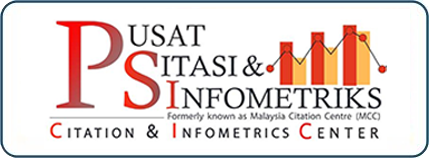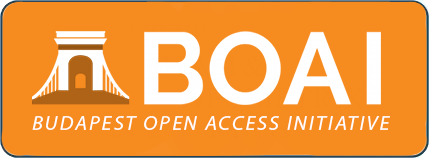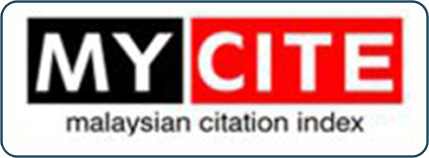Microtakaful
A Lesson from Malaysian Low-Income Women Entrepreneurs
DOI:
https://doi.org/10.33102/jmifr.653Keywords:
Microtakaful, community development, financial inclusion, women entrepreneurship, B40, MalaysiaAbstract
Women entrepreneurs possess a pivotal role in accelerating social and economic growth, creating significant contributions on a national and global scale. However, their accomplishments and significance are sometimes ignored. This study investigates the need for microtakaful products among Malaysian Low-income women entrepreneurs (B40 Women Entrepreneurs), as well as the ways in which these products might assist these women’s ventures. Using a qualitative approach, the study employs semi-structured interviews, analysed using Nvivo software to identify recurring themes within the collected data. The study reveals a strong perceived demand for microtakaful among low-income Malaysian women entrepreneurs, where the women both acknowledge the significance of having takaful and show positive intention to engage in the products. Nonetheless, the study highlights three factors: affordable pricing, Takaful benefit coverage and Takaful agents that can influence their attitude and intention toward takaful products. These results indicate that the Takaful sector holds substantial potential for growth and for supporting women small-business owners. The findings suggest the need to develop customised microtakaful products with features and framework tailored to the specific needs identified in this study. This presents policymakers and regulators with a significant opportunity to promote financial inclusion by facilitating the development and distribution of microtakaful products specifically designed for women-led microenterprises.
Downloads
References
Abdullah, N. I. (2021). Impactful and collective microtakaful in addressing the impact of COVID-19 pandemic. Journal of Islamic Finance, 10(1), 117–126. https://doi.org/10.31436/jif.v10i.534
Anderson, A., & Ojediran, F. (2022). Perspectives, progress and prospects: Researching women’s entrepreneurship in emerging economies. Journal of Entrepreneurship in Emerging Economies, 14(2), 292–315. https://doi.org/10.1108/JEEE-07-2020-0214
Au, W. C., Beigi, M., & Shirmohammadi, M. (2021). Running their own show: Malaysian women entrepreneurs’ kaleidoscope careers. Career Development International, 26(5), 613–639. https://doi.org/10.1108/CDI-02-2021-0043
Bank Negara Malaysia (BNM). (2016). Microinsurance and microtakaful: Discussion paper. Kuala Lumpur: Bank Negara Malaysia.
Bank Negara Malaysia (BNM). (2023). Financial Inclusion Framework 2023–2026: Strategy Paper. Kuala Lumpur: Bank Negara Malaysia.
Carter, S. L., & Shaw, E. (2006). Women’s business ownership: Recent research and policy developments. DTI Small Business Service. https://strathprints.strath.ac.uk/8962/
Department of Statistics Malaysia (DOSM). (2017). The participation of women in business is growing in 2015 with an annual growth rate of 8.0 percent. The Office of Chief Statistician Malaysia, Department of Statistics, Malaysia. https://www.dosm.gov.my/portal-main/release-content/the-participation-of-women-in-business-is-growing-in-2015-with-an-annual-growth-rate-of-8.0-percent.
Department of Statistics Malaysia (DOSM). (2021). Small and medium enterprises (SMEs) performance 2020. Department of Statistics Malaysia. https://www.dosm.gov.my/portal-main/release-content/small-and-medium-enterprises-smes-performance-2020
Falkner, E. M., & Hiebl, M. R. W. (2015). Risk management in SMEs: A systematic review of available evidence. The Journal of Risk Finance, 16(2), 122–144. https://doi.org/10.1108/JRF-06-2014-0079
Ghosh, P. K., Ghosh, S. K., & Chowdhury, S. (2018). Factors hindering women entrepreneurs’ access to institutional finance: An empirical study. Journal of Small Business & Entrepreneurship, 30(4), 279–291. https://doi.org/10.1080/08276331.2017.1388952
Global Entrepreneurship Monitor (GEM). (2023). GEM 2022/23 Women’s Entrepreneurship Report: Challenging bias and stereotypes. Global Entrepreneurship Research Association. https://www.gemconsortium.org/report/gem-20222023-womens-entrepreneurship-challenging-bias-and-stereotypes-2
Guest, G., Bunce, A., & Johnson, L. (2006). How many interviews are enough? An experiment with data saturation and variability. Field Methods, 18(1), 59–82. https://doi.org/10.1177/1525822X05279903
Haslifah Mohamad Hasim. (2014). Developing a conceptual framework of microtakaful as a strategy towards poverty alleviation. Journal of Economics and Sustainable Development, 5(28), 1–9. https://www.iiste.org/Journals/index.php/JEDS/article
/view/18665
Jadi, D. M., Manab, N. A., & Ahmad, S. N. (2014). Insurance as a risk transfer mechanism in small and medium enterprises (SMEs). Proceedings of the International SME Conference (pp. 123–134). Kuala Lumpur, Malaysia.
Kamall, Y., Shafinaz, A., & Azura, A. (2023). Critical success factors that determine the entrepreneurial readiness among the B40 women in Selangor. Journal of Entrepreneurship and Business, 11(1), 105–126. https://doi.org/10.17687/jeb.v11i1.1031
Misnan, S. N. S., Abdul Manaf, H., & Othman, P. (2015). The role of microcredit in promoting women’s entrepreneurship skills: Lesson from Amanah Ikhtiar Malaysia (AIM), Malaysia. Journal of Governance and Development, 11, 39–51. https://www.e-journal.uum.edu.my/index.php/jgd/article/view/13507
Mohamad, M., Musa, R., Yusuff, Y. Z. M. I., & Azam, N. R. A. N. (2022). Women entrepreneurs’ development in Malaysia: A SWOT analysis. International Journal for Studies on Children, Women, Elderly and Disabled, 15, 94–99. https://www.ijcwed.com/wp-content/uploads/2022/03/IJCWED15.ISU-1_048.pdf
Morazzoni, M., & Sy, A. (2022). Female entrepreneurship, financial frictions and capital misallocation in the US. Journal of Monetary Economics, 129, 93–118. https://doi.org/10.1016/j.jmoneco.2022.03.007
Muhammad Nasir, N. I., Hassan, R., & Osman, A. Z. (2023). Spectrum of Consumer Awareness in Islamic Finance: Takaful Industry in Malaysia. The Journal of Muamalat and Islamic Finance Research, 20(2), 125–134. https://doi.org/10.33102/jmifr.513
Noor, N. H. M., & Omar, N. (2024). Addressing gender inequality in entrepreneurship: Challenges of women entrepreneurs from low-income groups (B40). Sains Insani, 9(1), 34–46. http://dx.doi.org/10.33102/sainsinsani.vol9no1.615
Organisation for Economic Co-operation and Development (OECD). (2012). Council report gender equality in education, employment and entrepreneurship: Final report to the MCM 2012. https://www.oecd.org/employment/50423364.pdf
Ping, H. H. H. (2023, September 11). Unveil the secrets behind the success of women entrepreneurs in Malaysia. Monash University Malaysia. https://www.monash.edu.my/news-and-events/trending/unveil-the-secrets-behind-the-success-of-women-entrepreneurs-in-malaysia
Rapi, M. Z. H., & Kassim, S. (2023a). Indonesian low-income households’ acceptance of microtakaful in East Java. Journal of Islamic Monetary Economics and Finance, 9(4), 637–660. https://doi.org/10.21098/jimf.v9i4.1898
Rapi, M. Z. H., & Kassim, S. (2023b). Perception and intention to participate in microtakaful scheme among Indonesians: An application of Ajzen’s theory of planned behavior. Journal of Islamic Monetary Economics and Finance, 9(1), 133–166. https://doi.org/10.21098/jimf.v9i1.1615
Sukmana, R., & Hidayat, S. E. (2014). Challenges and opportunities in developing microtakaful in Muslim-majority country: A case study of Indonesia. The 11th Harvard University Forum on Islamic Finance (pp. 1–14). Cambridge.
Wilson, C. (2014). Semi-structured interviews. Interview techniques for UX practitioners, 23–41. https://doi.org/10.1016/B978-0-12-410393-1.00002-8
Downloads
Published
How to Cite
Issue
Section
License
Copyright (c) 2025 Syarah Syahira Mohd Yusoff , Muh Zul Hazmi Rapi, Siti Nursyawani Misman, Romzie Rosman , Rusni Hassan

This work is licensed under a Creative Commons Attribution 4.0 International License.















